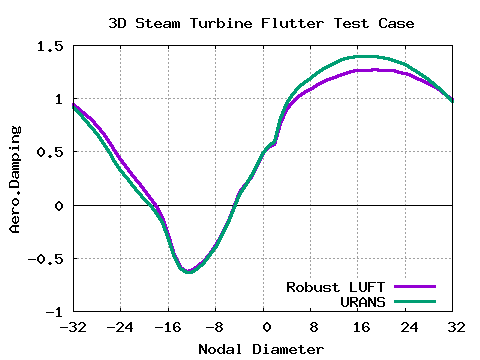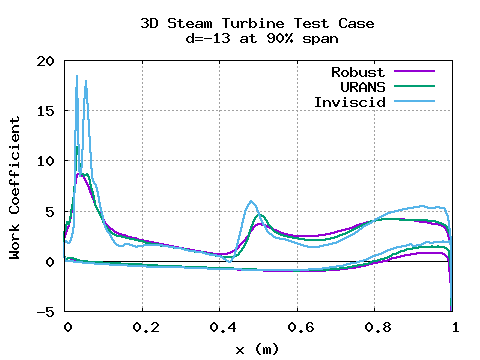
LUFT (Linearized Unsteady Flow solver for Turbomachinery)
LUFT (Linearized Unsteady Flow solver for Turbomachinery) is the 3D linearized Navier-Stokes flow solver developed by RPMTurbo. The main features of LUFT are the fast robust solver and the exact 3D non-reflecting boundary conditions which are critical for unsteady flow analysis. The exact boundary conditions applied in LUFT are not available in any other commercially available software. Software licenses for LUFT are now available.
LUFT can be used to perform flutter, forced response and acoustic analyses for turbomachinery.
RPMTurbo can add modules to LUFT to suit each client's specific requirements, for example, special boundary conditions, custom filters for client specific input files, and inclusion of proprietary flow models. RPMTurbo can also perform a worked example of the client's specific application and provide on-site training.
RPMTurbo has developed a 3D linearized Navier-Stokes flow solver to calculate the unsteady flow response due to blade motion. The main features of RPMTurbo's linearized flow solver are:
- 3D Navier-Stokes and inviscid flow modelling
- Full turbulence modelling
- Customized gas models
- Exact 3D non-reflecting boundary condition
- An efficient and robust solver
- Complex mode shapes
Fast Robust Linear Solver
RPMTurbo has added a new fast, accurate and robust linearized solver to LUFT that is perfect for design analysis. It can calculate an unsteady flow solution on a 270 000 cell mesh in just two minutes on a desktop computer. The new solver calculates the linearized inviscid flow solution about a high fidelity RANS steady flow solution. The unsteady solution is calculated on the RANS mesh and there is no need to transfer the steady solution to an inviscid flow mesh. The new solver is also very robust and unsteady solutions can be determined on poor quality meshes and high resolution RANS meshes with y+ < 1. RPMTurbo can write filters to read the steady flow solution from any flow solver.
The new method is accurate because the unsteady flow is calculated about a high fidelity RANS steady flow solution and RPMTurbo's 3D non-reflecting boundary conditions are applied. The aerodynamic damping plot from a flutter analysis of a steam turbine is shown below. The damping curve calculated with the new robust solver is very similar to the damping curve calculated with a linearized URANS flow solver. The work coefficient plot for nodal diameter -13 for the steam turbine flutter analysis is also shown below. The robust solution agrees well with the URANS solution. The inviscid solution shown in the plot was calculated assuming inviscid flow for both the steady and unsteady flow. The robust solution is similar to the URANS solution, however, there are differences between the inviscid and URANS solutions. This demonstrates that the new robust method of calculating the unsteady inviscid flow about a steady RANS flow solution is an accurate and efficient method of predicting flutter behaviour.


Contact RPMTurbo to find out more information about licensing LUFT.